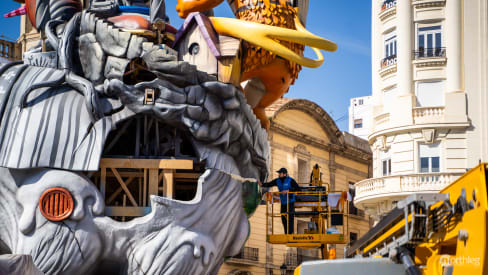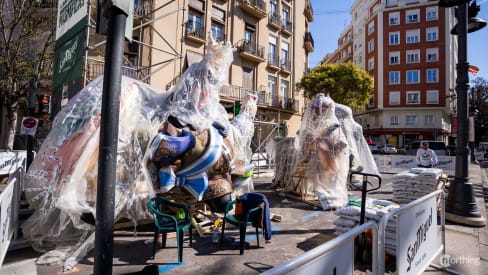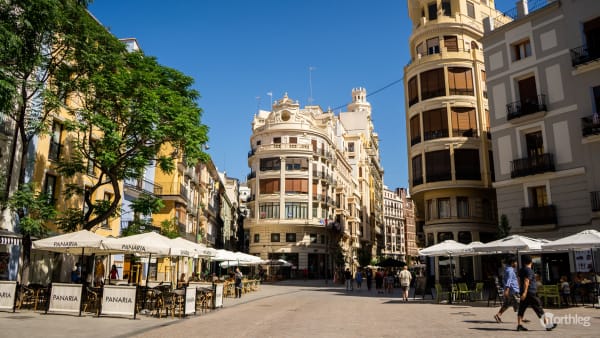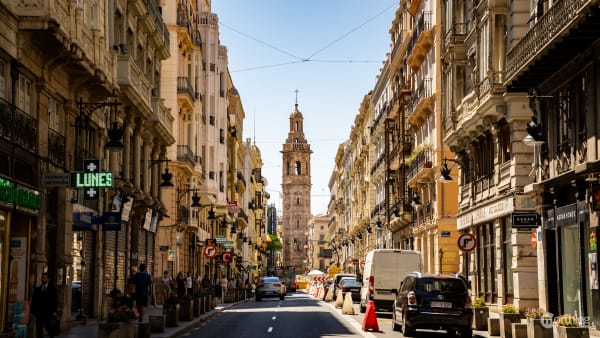How it’s done
How it’s done
The fallas are pretty much already complete in the artists’ workshops by the time of the Plantà. The sculptures made of wood, cardboard, cork and papier-mâché are built and painted weeks before.
However, in order to be transported to the chosen spot in the neighbourhood, they need to be disassembled (especially in the case of the bigger fallas), put in large trucks, and reassembled on site.
Cranes
In the case of the bigger fallas, usually the fallas mayores (adult fallas), falleros need to use cranes to put them up piece by piece. Normally, they will start from the central body (the bigger and main one) and the lateral bases. After that, they will add the various ninots (the smaller figures) that decorate the composition.

These ninots, lighter in weight, are normally secured and nailed with wooden sticks. Other additions like signs that explain the falla to the public are also put up last.
After the bulk of the work is done, it’s time for the finishing touches. The various falleros check if the paint has been ruined and retouch it if needed, as well as add some final ornaments.
Al Tombe
There is also another way to put up the fallas that doesn’t involve cranes. It is way more theatrical, but it can only be done with the smaller fallas, like the fallas infantiles (fallas for children). This technique is called plantà al tombe.
After being taken out of the truck, the falla is put on the ground, lying down. From there, several falleros will leverage one side or the other and prop the sculpture up. This is done without the use of any machine, just with the strength of the people and the help of ropes in case of a bigger sculpture.
Safety procedures
Independently of the size, there are always safety procedures that need to be respected.
First of all, the site where the falla will be set up is prepped. This means that sand is placed on the ground to avoid damage to the pavement or asphalt when the falla burns in the Cremà. Despite the precautions, it is not uncommon for asphalt to melt with the heat of the bonfires.

Due to the size of the sculptures, which can reach up to 20 metres in height (65 feet), the next step is making sure the fallas won’t topple over under their own weight or the wind. This is achieved through the use of sandbags and cement blocks (in most cases), or even cement bases (only in rare cases).















